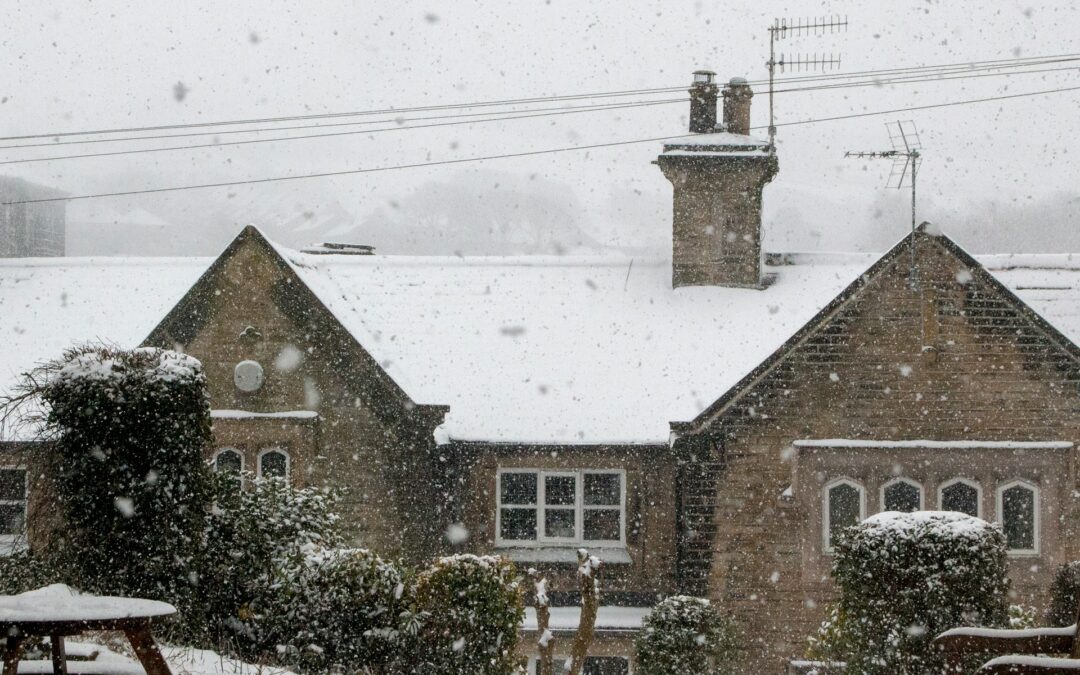As winter approaches, it’s essential to take proactive steps to ensure that your roof is prepared to withstand the harsh weather conditions ahead. Snow, ice, and freezing temperatures can wreak havoc on your roof, leading to leaks, ice dams, and other damage if left unchecked. By performing winter roofing maintenance tasks, you can protect your roof and preserve its integrity throughout the winter months. In this article, we’ll outline some essential tips for preparing your roof for winter.
- Clean Your Gutters and Downspouts:
Clogged gutters and downspouts can prevent proper drainage, leading to water backup and potential damage to your roof and home. Before winter arrives, take the time to clean out your gutters and downspouts, removing leaves, twigs, and other debris. Use a gutter scoop or a pressure washer to clear away stubborn clogs and ensure that water can flow freely away from your roof and foundation.
- Trim Overhanging Branches:
Overhanging tree limbs can pose a threat to your roof, especially during winter storms when heavy snow and ice accumulation can weigh them down. Trim back any overhanging branches that are touching or rubbing against your roof to prevent damage to the roofing materials and reduce the risk of falling branches causing injury or property damage.
- Inspect Your Roof for Damage:
Before winter sets in, conduct a thorough inspection of your roof to identify any signs of damage or wear and tear. Look for missing or damaged shingles, cracked flashing, loose or damaged gutters, and signs of water infiltration, such as water stains on your ceiling or walls. Addressing any issues promptly can help prevent further damage and costly repairs down the line.
- Seal Any Leaks or Gaps:
Even minor leaks or gaps in your roof can allow water to penetrate your home, leading to water damage, mold growth, and structural issues. Inspect your roof for any signs of leaks or gaps around vents, chimneys, skylights, and other roof penetrations. Seal any cracks or gaps with roofing caulk or sealant to prevent water from entering your home and causing damage.
- Check Your Attic Insulation and Ventilation:
Proper attic insulation and ventilation are essential for preventing ice dams and maintaining a consistent indoor temperature throughout the winter. Inspect your attic for signs of inadequate insulation, such as cold spots or drafts, and add additional insulation as needed to ensure sufficient coverage. Additionally, check your attic vents to ensure they are clear of debris and functioning correctly to allow for proper airflow and ventilation.
- Install Ice and Snow Guards:
Ice dams can form along the eaves of your roof when snow melts and refreezes, leading to water backup and potential damage to your roof and home. Installing ice and snow guards along the eaves can help prevent ice dams from forming by allowing snow and ice to melt and drain off the roof more effectively. These guards can be installed by a roofing professional and are an effective way to protect your roof from winter weather damage.
- Schedule a Professional Roof Inspection:
If you’re unsure about the condition of your roof or if you’ve noticed any signs of damage during your own inspection, it’s a good idea to schedule a professional roof inspection before winter arrives. A qualified roofing contractor can assess the condition of your roof, identify any issues, and recommend appropriate repairs or maintenance to ensure your roof is prepared for the winter months ahead.
In conclusion, winter roofing maintenance is essential for protecting your roof and preserving its integrity throughout the cold months. By taking proactive steps to clean your gutters, trim overhanging branches, inspect your roof for damage, seal any leaks or gaps, check your attic insulation and ventilation, install ice and snow guards, and schedule a professional roof inspection, you can ensure that your roof remains in top condition and provides reliable protection for your home throughout the winter season. Don’t wait until it’s too late – start preparing your roof for winter now to avoid costly repairs and damage later on.


Recent Comments